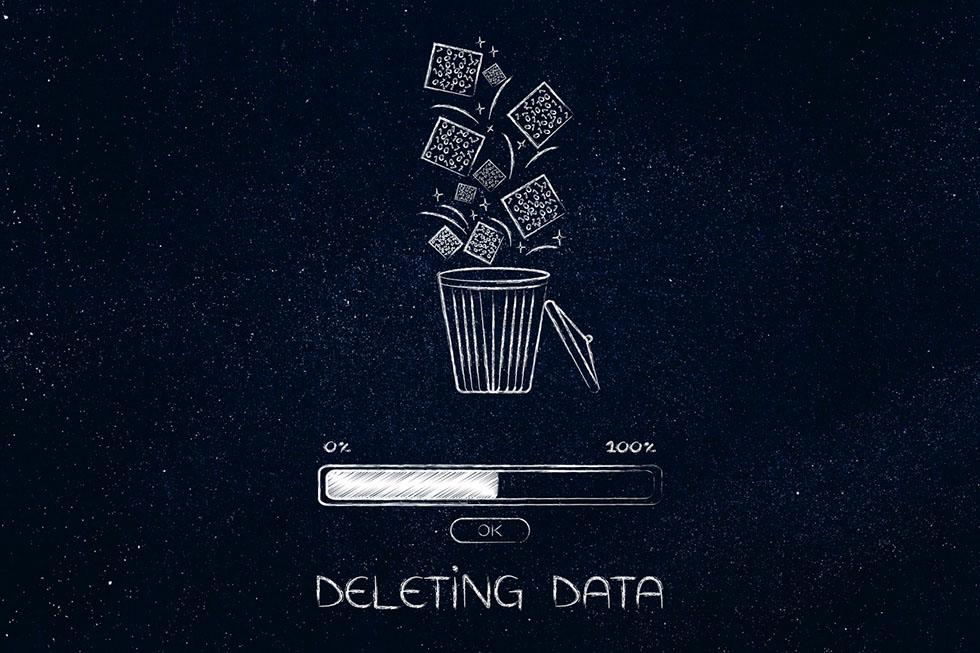Leading market research company, IDC forecasts that the data created during the next three years, will exceed all data created in the previous 30 years. ^
2.5 quintillion bytes of data is created every day.+. The data integrity of that staggering amount of information has never been more important as data-driven businesses make huge operational decisions based upon it. In 2021, the Harvard Business Review reported that 90% of business leaders believe data literacy is crucial for success.
Yet, the vast majority of CEOs have little trust in the accuracy of their data. According to a recent study by HFS Research and data management company, Syniti, just 5% of enterprise executives have a high degree of confidence in their business data*. They also found that almost 50% of respondents deliberately under-utilise their data due to integrity concerns.
28% of customer and prospect data is suspected to be inaccurate.
Experian. ^^
Due to the speed in which it is created, it will rapidly become obsolete. Research by Marketing Sherpa suggests that B2B databases decay at a rate of 2.1% per month (22.5% every year), on average. ++ Add the rest of the ‘dirty data’ that pollutes your database, silently sabotaging your business, and you have a significant data management issue.

What is ‘dirty data’?
Referring to unreliable or error-filled records, dirty data includes incomplete, inaccurate and inconsistent records, along with Duplicate or outdated files that simply clog up your storage, providing no value.
As you might expect, missing information is the most common form. Human error accounts for more than 60% of dirty records, according to Experian. Poor internal communication is understood to result in another 35%**. There may be multiple points of entry and data may be stored across multiple CRM or legacy systems.
However, whether valuable to your business or not, it is still your legal responsibility to protect company data under EU and UK GDPR data protection legislation.
What are the negative impacts of dirty data?
Dirty data builds silently and can remain hidden for years. Whilst you might not think that the odd piece of inaccurate files will be overly detrimental to your organisation, the cumulative effect can be.
The biggest impact of holding unvaluable records is the financial impact in wasted time, money, resources and productivity. Globally, inaccurate data costs a business between 15% and 25% of its revenue. **
As many businesses don’t have a data management strategy, they don’t measure how many low-quality records they have. However, Gartner state that losses amount to an average $15 million per year. ^
Besides the poorly informed operational decisions a business might make, bad data results in interruptions in service, failed deliveries, poor service, and you cannot run an effective marketing campaign without accurate, up-to-date records. Without fully knowing your audience, you can’t offer your solution to their problem. Understanding the information collected about your customers is only possible if it is accurate.

How do you remove dirty data?
Good data hygiene is more than ensuring that all the fields on your CRM system are complete. They need to be accurate to avoid misinterpretation and you need to ensure that you are not keeping files that serves no purpose.
The prospect of cleaning out your database is daunting and arduous, to say the least. However, an effective data strategy will help your administration in the long run, whilst maximising productivity, resources, time and cost efficiencies. Effective data management can result in significant revenue growth.
Data hygiene assessment.
Start with a data hygiene assessment or audit; without knowing where you are to begin with, you cannot formulate an efficient strategy. Dirty data events are not always isolated, there may be patterns requiring a change in processes and mindset.
Where is your data stored? Is it on hardware or in the cloud? What format does the information need to be in? Who should have access to it?
You should take time to classify the records you have. What is valuable? What is pointless clutter that just increase marketing administration? What level of detail do you actually need? It may help to group it into categories, is it mission-critical, do you need to store it for compliance purposes and do you need it at all.
Data cleansing.
Not only is manual data cleansing painstakingly slow, and let’s face it, a little laborious, it is reliant on consistent human interaction. This could mean future human errors are made – creating a vicious circle.
It is also near on impossible to implement at enterprise scale. Fortunately, there are many software programmes to make the process relatively pain-free.
Duplicate File Finders are a great example of this. Duplications build-up surprisingly easily. In a large team, the same file can be saved on the network many times. For every duplicate document, you are paying double the amount to store and protect it. Times that by the number you discover and you end up with substantial sums.
Deduplication has been shown to reduce the need for storage by up to 90%*
Computer Disposals Limited.
You may also change your settings to auto-archive or even delete files after a set amount of time. Are you storing documents saved by an ex-employee that left years ago?
When it comes to data erasure, it is always a good idea to consult with your ITAD partner to ensure that you remain compliant; they will highlight any potential data governance issues you might not have considered.
If cleansing at scale, it is likely that you will find you have resources that are surplus to requirements or redundant IT equipment. As an example, you may have server racks that are no longer required, especially if you are in the process of transitioning to cloud storage. Data centre decommissioning should always be undertaken by IT asset disposition services to ensure compliance with WEEE and the EU and UK GDPR data destruction requirements. An ITAD supplier will provide a full ITAD chain of custody and an IT asset disposal accreditation for each end of life IT asset. Asset recovery programmes also mean that you effectively sell redundant IT assets; you’ll receive the residual value for the components that enter the circular economy.
Create a new procedure.
Once you have invested time and effort to cleanse your system – you need to prevent unreliable records building up again with a consistent, companywide approach to data management and a documented policy.
Create a Standard Operating Procedure for all points of entry. This should include a standardised input system to eliminate dirty data. Review employee permissions so only those who need to input for their role can do so. This also ensures that the same collection process is followed and that your organisation only stores the detail it needs. Automated tools and applications can help with checks for incomplete or missing fields and it never hurts to manually check this on occasion also.
The document should be communicated across the team and to stakeholders, this will make sure everyone sings from the same data strategy hymn sheet but also addresses concerns if there is an issue with the level of trust employees or board members have regarding data integrity.

Data-driven enterprises have become reliant on the advanced technologies that facilitate their operations, but AI, machine learning, predictive modelling and the vast IoT produces vast numbers of records – each and every minute.
Given the rate of decay, a data management strategy, procedure and policy are worthwhile investments.
Once you’ve completed a system cleanse, implemented your policy and have agreed ITAD supplier procedures in place for any data erasure services required, it will become relatively effortless to follow data hygiene best practice.
An effective data management strategy will help to mitigate the inevitable build-up of dirty data. Not only will it make your day to day working life easier, you’ll find that the board will thank you for it too. By addressing your poor data integrity, your business will benefit from improved targeting, increased revenue and enhanced productivity, whilst maximising resources, time and cost savings.
tier1 provide comprehensive environmentally friendly ITAD and data destruction services, including out of hours, onsite data centre decommissioning services, which ensure business continuity.
Our lifecycle management, data wiping services and IT asset disposal can support your organisation and prevent any future data security issues – contact us on 0161 777 1000 or visit tier1.com
*BetaNews, **MarkLogic ^Forbes, ^^HubSpot, , +Next Tech, ++Runner Enterprise Data Quality
Resources.
Blancco, Unthinkable, The Next Tech, HubSpot, Harvard Business Review, Beta News, RMIT Online, Mark Logic, Runner EDQ, Forbes, CDL, Better Programming,



